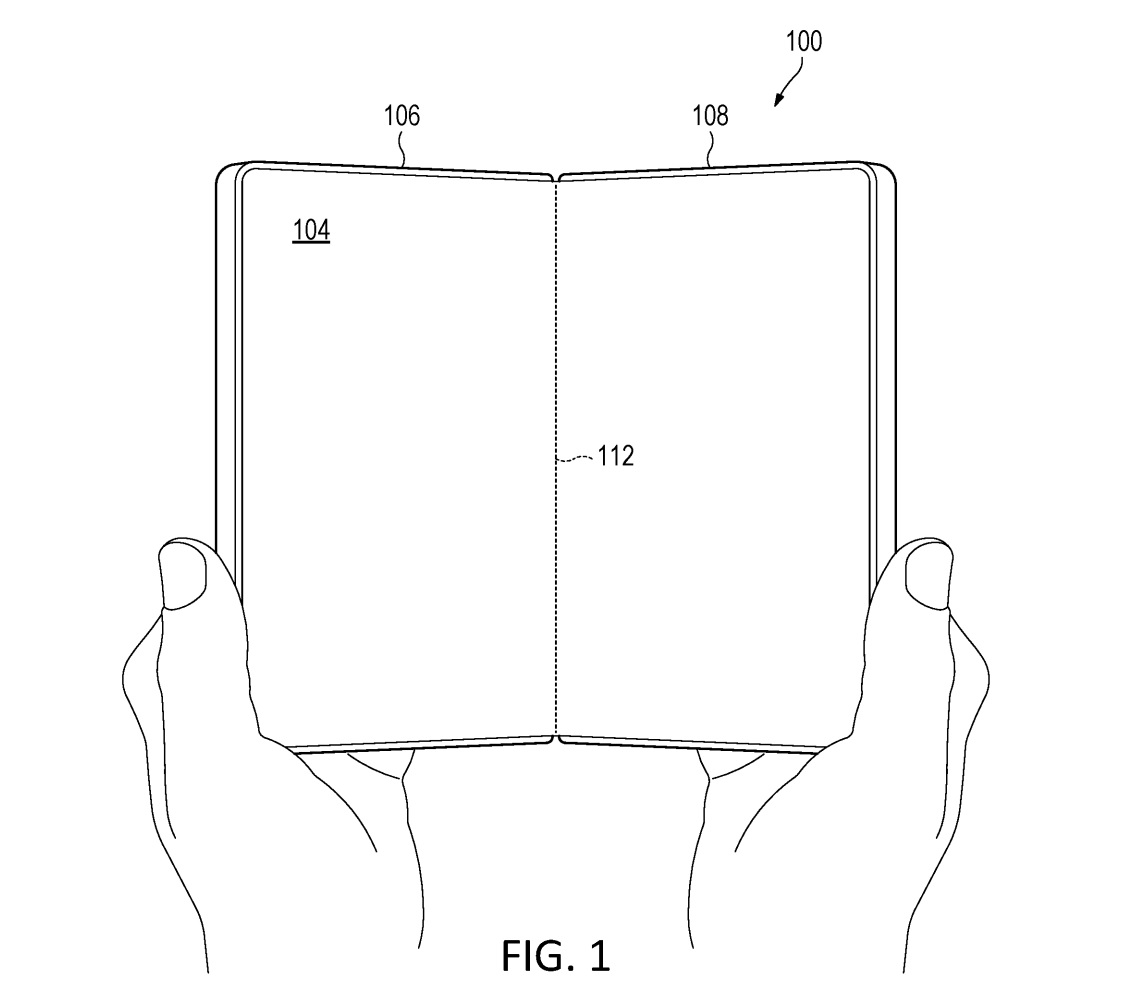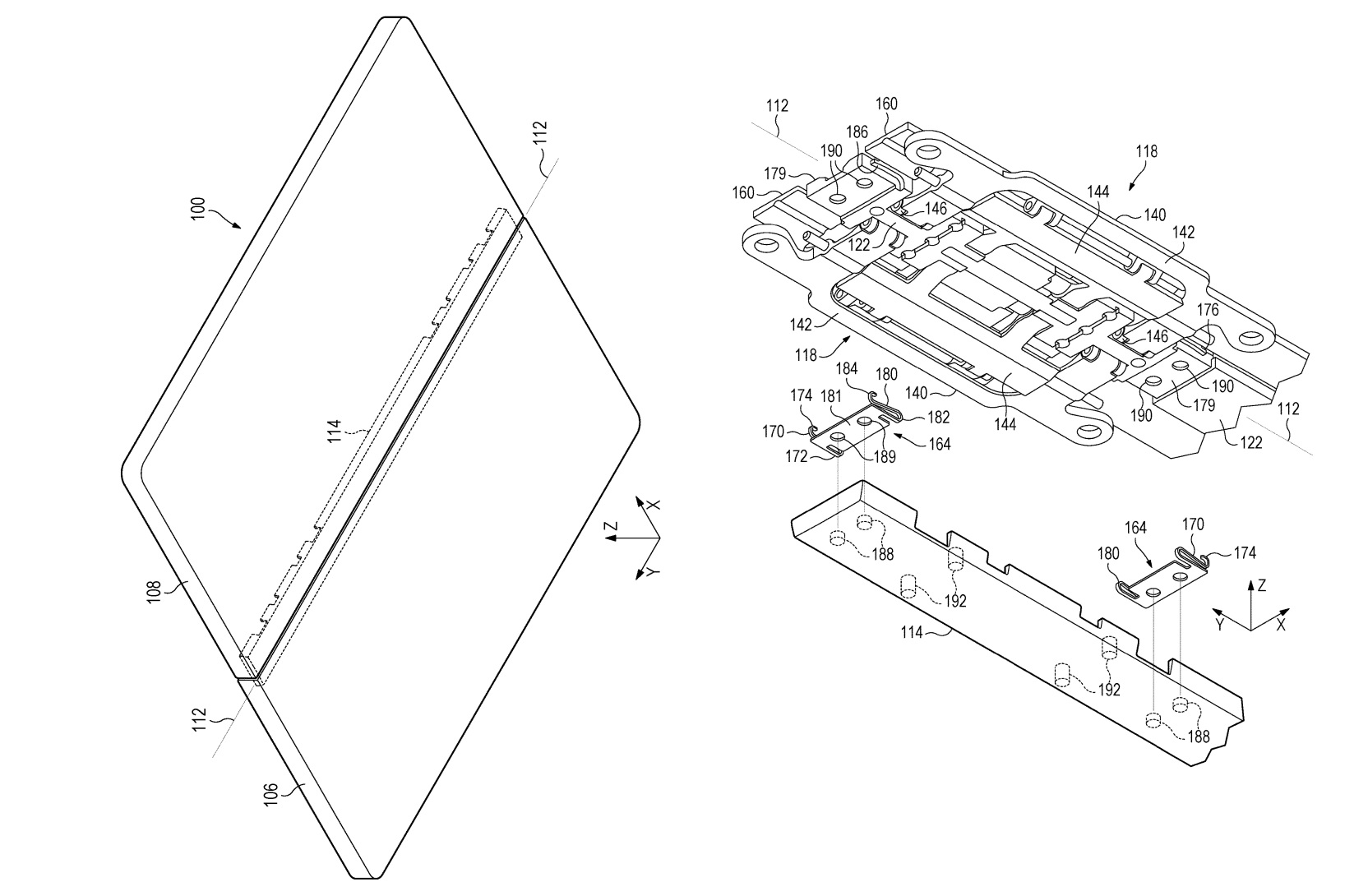Surface Duo 3 isn’t happening, but that doesn’t mean Microsoft cannot patent its next-gen foldable or dual-screen mobile devices. On February 29, the USPTO published a new patent titled “Foldable computing device spine cover plate,” which details a Galaxy Z Fold-like device with an interesting single-folding tech called “spine cover plate”.
The patent application detailed by Windows Latest shows off a new device with a “flexible display”. It’s somewhat similar to the Galaxy Z, but it uses a new spine cover plate mechanism, which is a component that protects the built-in hinge. Per the patent, the spine cover plates cover the structural element where the device folds and protects it.

So, what makes this patented phone unique? According to the patent, Microsoft is exploring a spine cover plate that smartly adjusts as and when you unfold or fold the phone. Unlike other foldable, which might leave gaps when folded or crease on the display, Microsoft’s idea use the spine cover plate to reduce gaps where dust and water could sneak in.

This makes the phone more durable, and the use of a new flexible display could make the crease less visible. Then we’ve got springs inside the patented phone to help the cover glide smoothly to the right position every time.
Microsoft’s patented Surface phone is an interesting take on foldables with a spine cover plate idea
The spine cover plate isn’t a fixed component but a movable feature of the patented Surface phone. It is coupled to the hinge assembly so that it can move relative to the folding structure based on the device’s holding and unfolding actions. In the patent application, Microsoft also explained how it plans to make the foldable phone thin.

Microsoft notes that the spine cover plate can pull itself closer to the device’s internal hinge mechanism when it is folded, which makes the whole device thinner and easier to hold. This also means the hinge, a critical part that lets the Surface phone fold, is better protected when the device is closed.
“By retracting the spine cover plate toward the central spine as the first display-supporting frame and the second display-supporting frame are rotated into a face-to-face orientation, the width of the folded computing device is reduced, thereby enabling easier and more comfortable handling of the device, such as with one hand,” Microsoft noted in the patent.
We also liked the idea of the “Block and Bump” mechanism. As shown in the above images, there’s a sliding part inside the hinge with a bump that fits into a groove.
As you fold the device, this bump slides along the groove, causing the spine cover plate to move in or out perpendicular to the hinge.
This clever use of shapes and movement helps control the plate’s position very precisely.
Microsoft also wants to use guide pins and apertures for movement control. The intention is to make sure that the spine cover plate moves in a straight line, avoiding any chance of it getting stuck or moving out of place.
That sounds like a pretty interesting idea, right? But we don’t know if another Surface phone will ever ship, especially after Panos Panay’s exit from Microsoft.
For now, Microsoft plans to focus on traditional devices, such as the Surface Laptop 6 and Surface Pro 10.
The post Microsoft patents a new Surface phone with single spine folding tech appeared first on Windows Latest
